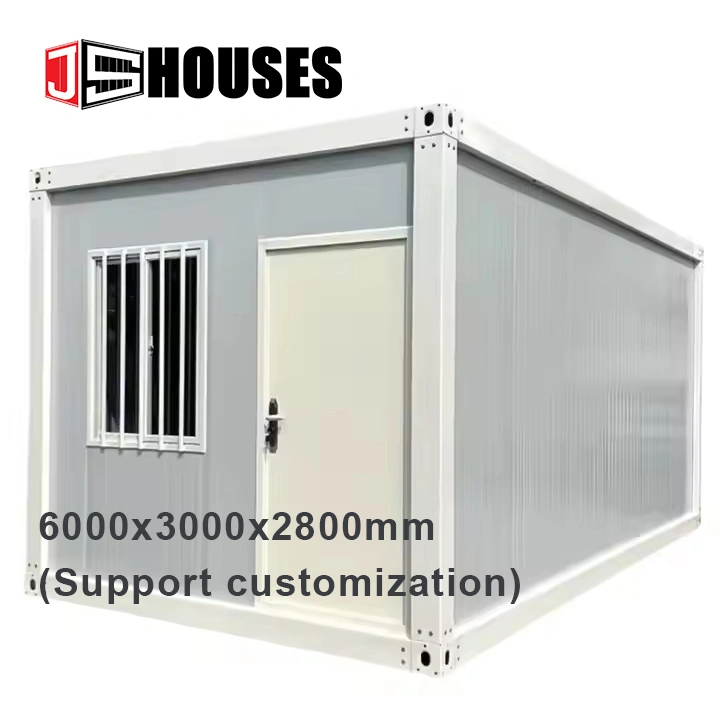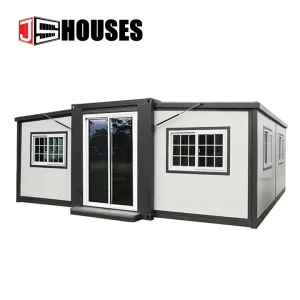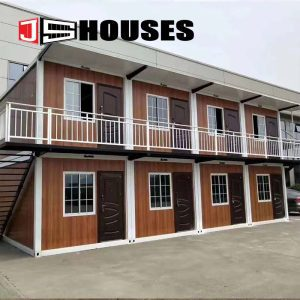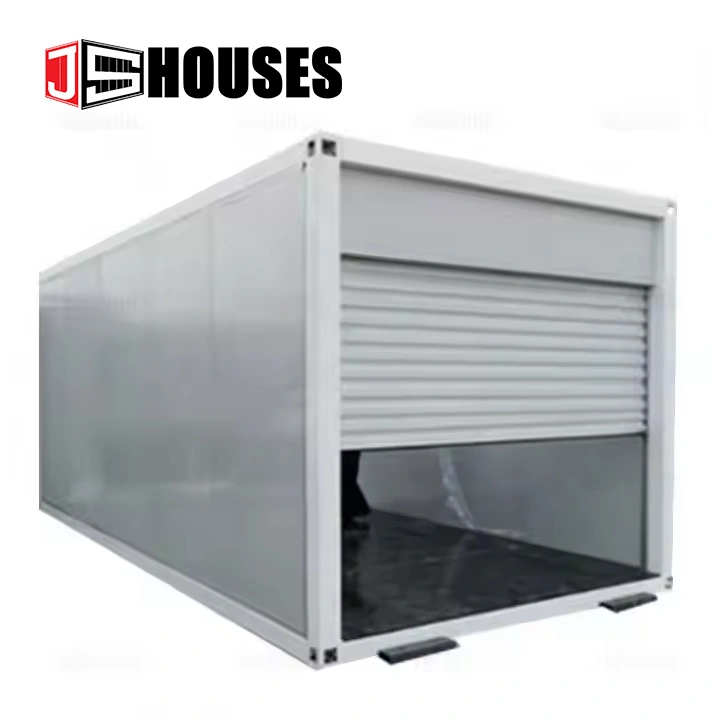What country has the most prefab buildings?
The Global Leader in Prefab: How China Became the Epicenter of Prefabricated Buildings
The question of which country has the most prefab buildings has a straightforward, unequivocal answer: the People’s Republic of China. This is not a matter of slight leadership but of absolute dominance on a scale that is difficult to comprehend. China does not merely use prefabricated construction; it has integrated it into the very fabric of its national development, deploying it at a volume and speed unmatched by any other nation in history.
To understand why China holds this title is to understand a confluence of powerful drivers: sweeping government policy, urgent demographic needs, ambitious technological ambition, and an industrial capacity that can turn blueprints into reality almost overnight. This is not just about counting buildings; it’s about analyzing a systemic transformation of the world’s largest construction market.

The Evidence of Scale: By the Numbers
Quantifying China’s lead requires looking at metrics that dwarf those of other countries.
- Market Share: As of the early 2020s, China accounts for over half of the global prefabricated building market. For perspective, while countries like Japan, Germany, and Sweden have higher penetration rates per capita, their total output is a fraction of China’s. The Chinese prefab construction market is valued in the hundreds of billions of dollars and is projected to continue its aggressive growth.
- Urbanization and Housing: In the last three decades, China has built the equivalent of another Europe’s worth of urban housing. Cities like Shenzhen and Chengdu transformed from modest towns into megacities of over 10 million people in a generation. Prefabrication, specifically a method called Prefabricated Prefinished Volumetric Construction (PPVC), where entire rooms or modules are manufactured in factories and stacked on-site, became essential to achieving this. It is estimated that hundreds of millions of Chinese citizens now live or work in buildings that extensively use prefab elements.
- The “Skyscraper Factory”: China erects a new skyscraper every few days, and a vast majority incorporate prefabricated elements like facades, bathroom pods, and structural components. The famous 57-story Mini Sky City in Changsha was built in just 19 days using a radical modular steel construction method, a feat that serves as a powerful symbol of Chinese prefab capability.
The “Why”: The Drivers of Chinese Dominance
Several interconnected factors have propelled China to the forefront of prefabricated construction.
1. Central Government Policy and the “Made in China 2025” Initiative
The single most important driver has been the active, top-down promotion by the Chinese government. This is not a trend driven solely by market forces; it is a state-sponsored strategy.
- National Industrialization Goals: Policies like “Made in China 2025” explicitly aim to upgrade Chinese manufacturing, and the construction industry was a prime target for modernization. Moving building work from chaotic, weather-dependent sites to controlled, automated factories aligns perfectly with this vision.
- The “Construction 2.0” Revolution: Since around 2016, central government mandates have set ambitious targets for prefabricated buildings. For instance, the goal was for prefab structures to account for 30% of all new buildings in key regions like the Beijing-Tianjin-Hebei cluster, the Yangtze River Delta, and the Pearl River Delta by 2026. These are not suggestions but directives that local governments and state-owned enterprises must follow, often linked to subsidies and favorable regulations.
- Addressing Labor Shortages and Safety: China’s working-age population is shrinking, and the pool of young men willing to undertake grueling, low-wage construction labor is drying up. Prefabrication shifts the workforce to factory settings, which are safer, more skilled, and more attractive. This helps mitigate the risks and inefficiencies of traditional construction.
2. Unprecedented Urbanization and Speed
China’s historic migration from the countryside to cities—over 500 million people in 40 years—created a demand for housing, infrastructure, and commercial space that traditional methods could not possibly meet. Prefabrication offered a solution:
- Accelerated Timelines: Factory production can happen concurrently with on-site foundation work, slashing project timelines by 30-50%. This speed is crucial for meeting housing quotas, preparing for major events, and keeping up with economic growth.
- Standardization for Scale: The repetitive nature of mass housing—thousands of identical apartment units—is perfectly suited for assembly-line production. A factory can produce modules for an entire residential block with machinic precision and repetition.





3. Embracing Technological Integration
China’s prefab industry is not just about casting concrete panels; it is increasingly high-tech.
- Building Information Modeling (BIM): Major prefab projects are universally designed using BIM, a 3D model-based process that allows architects, engineers, and manufacturers to collaborate seamlessly. This digital backbone is essential for ensuring that thousands of components, produced in different factories, fit together perfectly on-site.
- Robotics and Automation: Chinese factories are at the forefront of using robotics for tasks like welding steel rebar cages, pouring concrete, and finishing surfaces. This automation enhances quality control and production speed while reducing human error.
- The “Sponge City” Concept: Prefab is even being integrated into green infrastructure. Prefabricated modular components for permeable pavements and drainage systems are being used to build “sponge cities” designed to absorb and reuse rainwater, mitigating urban flooding.
Case Studies: Prefab in Action Across China
1. The Xiong’an New Area: A Prefab City from Scratch
Perhaps the ultimate expression of China’s prefab ambition is Xiong’an, a new city being built about 100 kilometers southwest of Beijing. Intended to decentralize non-capital functions, Xiong’an is being constructed as a “green, intelligent, and innovative” city from the ground up. A significant portion of its residential, commercial, and administrative buildings are being built using prefabricated methods. This allows for unparalleled control over quality, speed, and the integration of smart city technologies from the outset.
2. Emergency and Temporary Structures: The COVID-19 Hospitals
The most dramatic demonstration of prefab’s power came in early 2020 with the outbreak of COVID-19. In Wuhan, construction crews built two specialized hospitals—Huoshenshan and Leishenshan—with over 2,500 beds in just over 10 days. This was only possible through extreme prefabrication. Container-sized modules, fully equipped with medical gases, plumbing, and electrical systems, were manufactured off-site, transported, and slotted into place like Lego bricks. This event showcased to the world the ultimate utility of prefab: its ability to respond to crises with breathtaking speed.
3. High-Rise Residential Towers
Across Chinese megacities, it is now standard practice for new 30- to 50-story residential towers to be built using prefabricated concrete components for walls, floors, and staircases. Cranes lift these massive, pre-finished pieces into place, while workers focus on assembly and connection. This method significantly reduces on-site waste, noise, and dust pollution—a critical consideration in densely populated urban centers.
Challenges and the Future Outlook
Despite its dominance, China’s prefab industry faces challenges. The high initial investment for factories can be a barrier. Logistics, especially transporting massive modules across long distances, is complex and costly. There is also a need for a more skilled workforce trained in digital design and modern assembly techniques, moving beyond traditional bricklaying.
However, the trajectory is clear. The Chinese government and industry are doubling down on prefab, pushing it towards even greater integration with:
- Green Building: Prefab allows for better control of materials and less waste, contributing to sustainability goals.
- Smart Homes and AI: Prefab is seen as the ideal physical platform for integrating IoT devices and AI-driven building management systems.
- Exporting Technology: Having perfected the model domestically, Chinese companies are now beginning to export their prefab expertise and entire building systems to other developing nations as part of the Belt and Road Initiative.
Conclusion
China’s position as the undisputed global leader in prefab buildings is unassailable. It is a title earned not by chance, but through a deliberate, state-orchestrated campaign to industrialize its construction sector. Driven by the twin engines of policy mandate and demographic necessity, China has leveraged its manufacturing prowess to build cities at a pace and scale never before seen. The result is a built environment where prefabrication is no longer an alternative but the default for a significant portion of new construction. As the technology continues to evolve, China’s experience serves as both a blueprint and a cautionary tale—a powerful demonstration of how prefab can shape a nation’s destiny, for better or worse. The rest of the world watches and learns from the epicenter of the prefab revolution.

